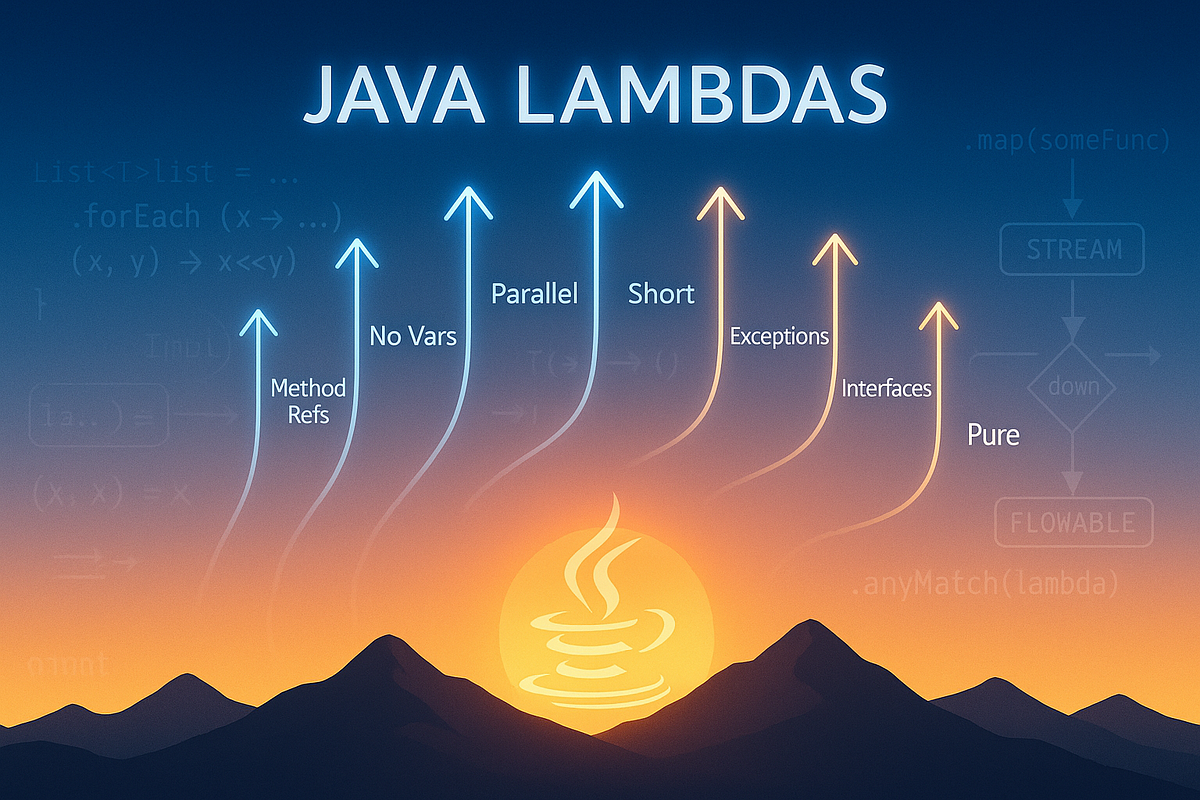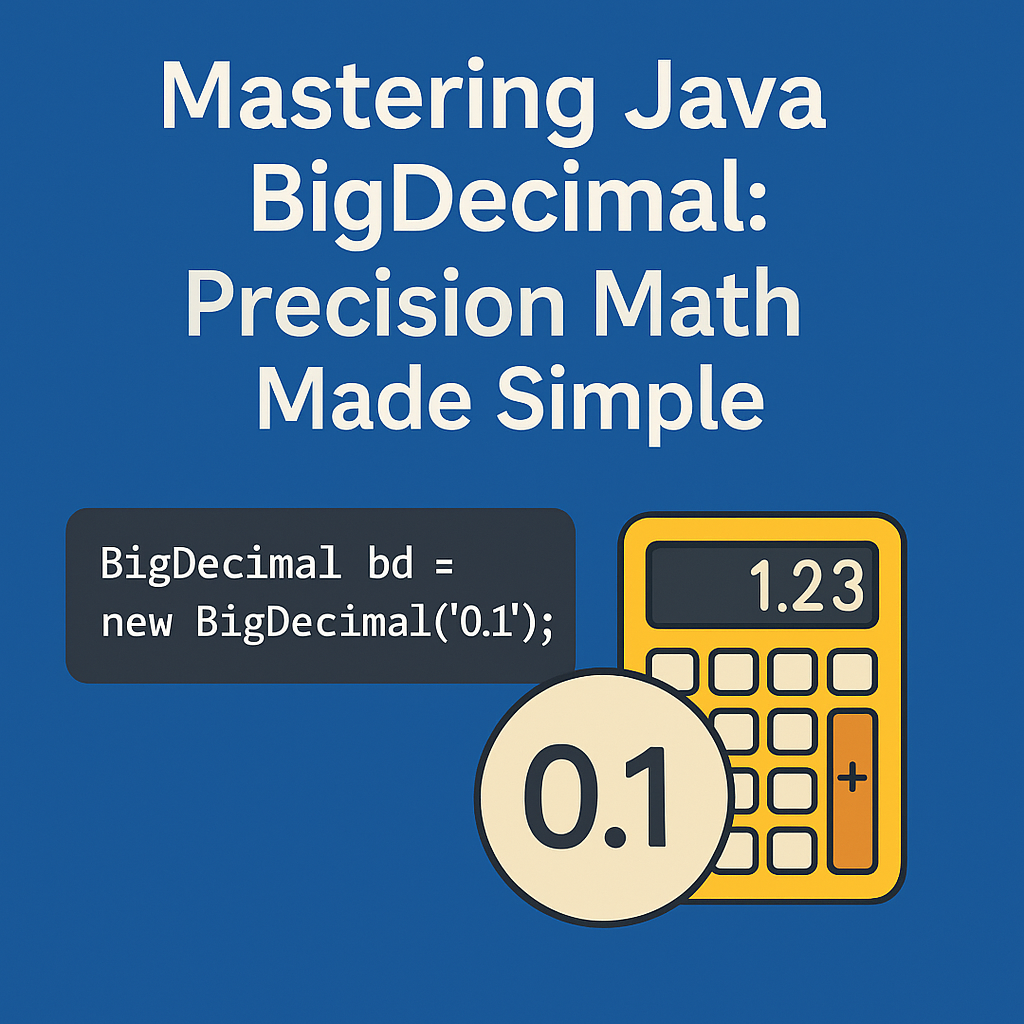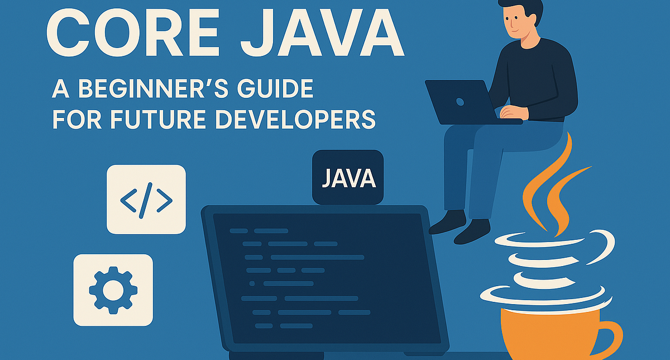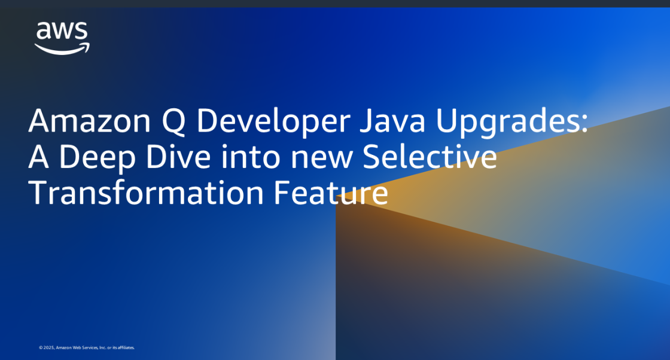Java
Dev
254

Image Credit: Dev
Exploring Firestore with Micronaut and Java 21: A Scalable NoSQL Solution for Modern Applications
- Choosing data storage for microservices is crucial; NoSQL can be more scalable in serverless environments.
- Google Cloud Firestore is explored as a serverless NoSQL database for modern applications, particularly AI and ML workloads.
- Firestore integrates well with tools like LangChain and LlamaIndex for various patterns like document loaders and vector stores.
- Firestore simplifies integration with AI services, enabling features such as automated embedding generation and image classification.
- Using Firestore with Micronaut and Java 21 for server-side development is detailed in the article.
- Setting up the project, client libraries, and configuring Firestore client are essential steps in working with Firestore.
- Code examples for creating a Firestore controller, validating feedback requests, and writing data to Firestore are provided.
- Firestore is highlighted as a great choice for scalable, AI-powered microservices in a serverless environment.
- The article emphasizes focusing on business value rather than infrastructure management with Firestore and Micronaut.
- Firestore with its scalability and integration with Micronaut simplifies building serverless, AI-powered applications.
Read Full Article
15 Likes
Medium
338

Image Credit: Medium
7 Expert Tips to Make Your Java Lambdas Soar
- Java lambdas introduced in Java 8 simplify functional programming, but can lead to performance pitfalls and unreadable code if not handled properly.
- Method references can replace verbose lambda expressions, improving readability.
- Minimize capturing variables in lambdas to avoid memory overhead.
- Carefully use parallel streams with lambdas to boost performance for CPU-bound tasks.
- Short, focused lambdas enhance readability and reduce debugging complexity.
- Lambdas don't handle checked exceptions directly; wrap them in try-catch blocks.
- Define custom functional interfaces for reusable lambda patterns.
- Keep lambdas pure by avoiding side effects for predictability.
- These tips aim to make writing clean, efficient code with Java lambdas.
- Implementing these tips can enhance microservices readability and robustness.
- Share your experience with applying these lambda tips in the comments.
Read Full Article
20 Likes
Medium
269

☕ Java the Right Way: Modern Standards for Effective & Secure Coding
- Java developers are encouraged to upgrade to Java 17+ for modern, clean, and secure coding practices.
- Spring Boot combined with Spring Security is essential for efficient Java programming.
- Prioritize code security with a checklist and use Project Lombok to reduce boilerplate code.
- Layer your application intelligently to avoid a messy, unmanageable codebase.
- Testing rigorously is crucial; avoid using main() as a test.
- Packaging your application with Docker is now a necessary step for developers.
- Using tools for code quality leads to team satisfaction and productivity.
- Stay cloud-ready and adapt to new technologies in the Java ecosystem.
- Continuous learning, refactoring, and code reviews are recommended to keep up with Java's evolution.
- Following modern coding practices ensures effective, secure, and maintainable Java code.
Read Full Article
16 Likes
Javacodegeeks
96

Image Credit: Javacodegeeks
How to Replace a Specific Word in a File Using Java
- The article discusses various methods to replace a specific word in a text file using Java.
- The first method involves java.nio.file.Files for reading and writing files, replacing the target word and updating the file using Streams.
- The second method uses classic java.io classes BufferedReader and BufferedWriter for memory efficiency, replacing the word and updating the file securely.
- The third method showcases the use of Apache Commons IO for simplified file reading and writing with utility methods.
- Each method demonstrates how to replace occurrences of a word in a file with another specified word.
- The article provides code snippets and explanations for implementing each method.
- The Java program using java.nio.file.Files reads all lines of the file, replaces the target word, and writes the updated content back to the file.
- The Java program using BufferedReader and BufferedWriter processes the file line by line, replaces the word, and updates the file securely.
- The Java program using Apache Commons IO simplifies file reading and writing, making word replacement more concise.
- The article concludes by summarizing the different approaches discussed in the text.
Read Full Article
5 Likes
Discover more
Medium
238

Image Credit: Medium
How to Switch from Java to Artificial Intelligence Engineer in 6 Months
- Java developers can transition into artificial intelligence engineering, a high-demand field with lucrative salaries.
- AI engineers earn an average of $146,085, making it a top job with growing opportunities.
- A six-month roadmap guides Java developers to become qualified AI engineers by leveraging their existing skills.
- The initial phase focuses on mastering AI basics, understanding different AI applications, and taking specialized AI courses.
- Months 3–4 involve developing technical skills like using AI frameworks, enhancing programming languages, and improving mathematical knowledge.
- Attention is given to handling data efficiently, building AI projects, and balancing theory with practical experience.
- The final phase is geared towards job readiness, creating a strong AI portfolio, and preparing for AI-related interviews.
- Continuous learning is emphasized post-transition to AI engineering, with AI communities and platforms recommended for growth.
- The combination of Java expertise and AI skills is highly valuable, allowing professionals to tackle complex problems and adapt to evolving AI requirements.
- Successful AI engineers dedicate time to continuous learning, combining traditional programming principles with cutting-edge AI technologies.
Read Full Article
14 Likes
Medium
88

Image Credit: Medium
Understanding Java Serialization, Deserialization, and Externalization
- Java allows for object serialization and deserialization, crucial in networking and file management.
- Serialization in Java is implemented through the java.io package, requiring classes to implement Serializable.
- ObjectOutputStream and ObjectInputStream handle serialization and deserialization in Java.
- The process involves writing object data to an OutputStream and reconstructing objects from the byte stream.
- Using transient keyword excludes fields from serialization to protect sensitive data.
- Externalization offers complete control over the serialization process by implementing Externalizable interface.
- Externalizable classes define methods for writing and reading object data during serialization and deserialization.
- Understanding serialization and externalization helps developers make informed decisions for efficient and safe Java applications.
- Serialization allows objects to persist beyond the JVM, useful for various applications like distributed systems.
- Serialization version identifier (UID) ensures compatibility during deserialization, preventing corrupt object data.
Read Full Article
5 Likes
Infoq
131

Image Credit: Infoq
Java News Roundup: Spring Milestone, Payara Platform, Jakarta EE 11 Update, Apache Fory
- This Java roundup features news on Spring Framework 7.0, Payara Platform, Jakarta EE 11, Apache Tomcat, and more.
- JDK 25 saw Build 27 release with various fixes, while JDK 26's Build 2 addressed issues as well.
- Jakarta EE 11's release review is ongoing, with focus shifting to Jakarta EE 12 post-release, including CI job setup changes.
- Spring Framework's 7.0.0 release brings bug fixes, documentation improvements, dependency upgrades, and new features.
- Payara Platform's June 2025 edition delivers enhancements like improved deployment times and support for Jakarta EE 11.
- Micronaut released version 4.8.3 with bug fixes, while Micrometer Metrics and Tracing received version updates.
- Project Reactor's milestone release 2025.0.0 includes dependency upgrades, and older versions receive maintenance updates.
- Apache Tomcat versions, with new features like maxPartCount and improved TaskQueue, were announced alongside Apache Fory's renaming.
- ASF renamed Apache Fury to Apache Fory due to naming conflicts, aligning it with ASF standards.
Read Full Article
7 Likes
Dev
220

Image Credit: Dev
Multithreading in Java: Concepts and Code
- Multithreading in Java is essential for achieving better performance and speed in application development, allowing tasks to run simultaneously.
- Multithreading involves running multiple threads within a single program, enabling parallel execution of tasks.
- Using multithreading in Java leads to faster operations, improved user experience, and efficient CPU utilization.
- Two common ways to implement multithreading in Java are by extending the Thread class and implementing the Runnable interface.
- Key concepts of multithreading include understanding the thread life cycle, thread methods, and synchronization to avoid data conflicts.
- An example of synchronizing threads to control access to shared resources is highlighted.
- Multithreading is beneficial for scenarios like downloading files while displaying loading bars simultaneously, enhancing user experience.
- Tips for using multithreading effectively in Java include avoiding excessive thread creation, careful synchronization, and utilizing thread pools for managing multiple threads.
- In conclusion, mastering multithreading in Java leads to improved application performance, responsiveness, and resource utilization.
- The article recommends exploring Java tutorials on TPoint Tech Website for comprehensive learning and practical approaches.
Read Full Article
13 Likes
Medium
169

Image Credit: Medium
Mastering Java BigDecimal: Precision Math Made Simple.
- BigDecimal in Java is a class for arbitrary-precision decimal numbers providing exact control over precision and rounding.
- It stores numbers as an unscaled value and a scale, ensuring accuracy for small and large numbers.
- BigDecimal is crucial for financial systems and scientific calculations where precision is paramount.
- Contrary to float or double, BigDecimal avoids floating-point errors common in quick calculations.
- BigDecimal supports calculations like addition, subtraction, and division, offering more precise results.
- Creating BigDecimal objects is typically done using constructors with strings to avoid floating-point errors.
- BigDecimal methods like add(), subtract(), multiply(), and divide() are used for mathematical operations.
- When using division with BigDecimal, specifying scale and rounding mode is crucial to avoid infinite decimals.
- Using compareTo() for comparisons and constants like BigDecimal.ZERO helps in simplifying code.
- Testing edge cases with BigDecimal is advised for scenarios involving zero, negative numbers, or extreme values.
- Practical examples, such as calculating sales tax, demonstrate the clean and precise nature of BigDecimal calculations.
- BigDecimal ensures accuracy in financial applications and critical systems by avoiding floating-point pitfalls.
- String constructors, explicit scaling, and thorough testing are recommended for effective use of BigDecimal.
Read Full Article
10 Likes
Inside
93

Interconnecting Java and Native Code with the FFM API
- The Java platform offers libraries for developers to go beyond JVM boundaries.
- Accessing foreign memory and invoking foreign functions in Java was previously challenging and unsafe.
- The Foreign Function & Memory Access API (FFM API) in Java SE 22 helps bridge the gap between Java applications and native libraries.
- The FFM API simplifies accessing off-heap memory and invoking native functions.
- The use of the jextract tool automates the generation of FFM API artifacts for accessing native libraries.
- The presentation covers essential FFM principles and Java integration with native graphic libraries and AI frameworks.
- Developers are encouraged to explore the JavaOne 2025 playlist for more information.
Read Full Article
5 Likes
Medium
148

Image Credit: Medium
Handling Basic Errors With Try and Catch Blocks in Java for Beginners
- Java uses try and catch blocks to handle errors during runtime, preventing crashes.
- The try block contains potentially problematic code, and the catch block specifies how to handle exceptions.
- Java's call stack tracks method calls, and when an exception is thrown, Java searches for a matching catch block.
- If no catch block is found, Java halts the program and prints a stack trace.
- The syntax for try and catch blocks follows a specific pattern, with the try block preceding the catch block.
- You can catch multiple types of exceptions by listing them in separate catch blocks or grouping them with a pipe character.
- Java also supports a finally block that runs regardless of whether an exception is caught or not.
- Try and catch blocks are especially useful for handling input-related exceptions and array index out of bounds errors in Java.
- Exceptions like NumberFormatException, ArrayIndexOutOfBoundsException, and InputMismatchException can be caught and handled to prevent program crashes.
- Using try and catch blocks aligns with Java's error handling mechanisms and allows for controlled responses to errors.
Read Full Article
8 Likes
The Register
331

Image Credit: The Register
UK unis cough up £10M on Java to keep Oracle off their backs
- UK universities and colleges signed a £9.86 million contract with Oracle to use its Java SE Universal Subscription model.
- The contract includes a waiver of historic fees for institutions using Oracle Java since 2023.
- Jisc Services Limited facilitated the agreement for higher and further education establishments in the UK.
- Oracle's Java SE Universal Subscription model drew criticism for higher costs compared to the previous licensing model.
- Gartner's analysis revealed the new subscription model to be two to five times costlier for large organizations.
- Organizations have been advised to find open-source alternatives due to the increased costs of the new Java licensing model.
- A survey indicated that only one in ten Oracle Java users were likely to continue using Oracle Java.
- Users are cautioned to review their usage of Oracle Java to avoid software audits as Oracle increases its audit activities globally.
- Jisc mentioned the £10 million deal was aimed at simplifying licensing and achieving efficiencies for higher education institutions.
Read Full Article
13 Likes
Medium
46

Image Credit: Medium
What is Core Java? A Beginner’s Guide for Future Developers
- Core Java is the fundamental part of the Java programming language, consisting of basic concepts like variables, loops, OOP, exception handling, threads, I/O operations, and JVM basics.
- Core Java is versatile and used in various fields such as web applications, mobile applications, back-end applications, and automation.
- Java is popular with over 9 million developers worldwide, used by major brands like Amazon, Netflix, and Google, ranking high in TIOBE Index, and being part of many engineering college syllabuses.
- Java helps in problem-solving skills development and computerized thought process improvement.
- Core Java is the foundation for Android apps and is vital for beginners entering the software industry.
- NareshIT offers Core Java courses focusing on visual, structured, hands-on, and mentored learning approaches with certification, interview preparation modules, and recorded sessions.
- Core Java Training at NareshIT is comprehensive, spanning basic to advanced levels, suitable for beginners and those aiming to excel in Java development for web applications.
- Learning Core Java opens up numerous opportunities in the software industry, enabling app development, testing, and coding exploration.
Read Full Article
2 Likes
Amazon
72

Image Credit: Amazon
Amazon Q Developer Java Upgrades: A Deep Dive into the New Selective Transformation Feature
- Amazon Q Developer now supports customization of Java upgrades with a new selective transformation feature, offering greater control over modernization journeys.
- The selective transformation feature allows targeting specific components and libraries for transformation, avoiding risky 'big bang' upgrades and ensuring application stability.
- Development teams can opt for individual developer-driven upgrades or orchestrated transformation campaigns managed by Center of Excellence teams.
- Selective transformation facilitates tailoring transformation plans using natural language chat or input files for more precise Java upgrades.
- The feature supports selecting steps from a transformation plan, upgrading first-party and third-party dependencies, and customizing their versions during JDK upgrades.
- The transformation can be run in interactive mode for user feedback or in no-interactive mode for continuous transformation without user input.
- The selective transformation feature streamlines Java version upgrades, reduces technical debt, and modernizes applications with minimal disruption, enhancing efficiency for development teams.
- The CLI provides practical examples of upgrading dependencies interactively or non-interactively, offering detailed transformation plans and user feedback options.
- The article emphasizes the importance of maintaining security, avoiding unvetted artifacts, and validating transformed code for functionality and security post-upgrades.
- Selective transformation in Java upgrade CLI revolutionizes Java modernization by providing granular control, natural language interactions, and targeted dependency management for a manageable, incremental process.
- The feature encourages teams to identify critical components for upgrading and leverage selective transformation for a tailored upgrade strategy, ensuring efficient, risk-managed Java modernization.
Read Full Article
4 Likes
Medium
115

Stop Crashing Your Java Apps with .equals() – Here's the Right Way to Use It
- Calling .equals() on a variable that hasn’t been initialized can lead to a NullPointerException.
- Flipping the order of the comparison can prevent a crash when using .equals().
- Using a constant string with .equals() ensures the method call works safely.
- The method .equals() belongs to the object on which it is called.
- Calling null.equals() will result in a crash, while "hello".equals(null) returns false.
- Understanding this can provide extra safety, particularly in critical applications.
Read Full Article
6 Likes
For uninterrupted reading, download the app